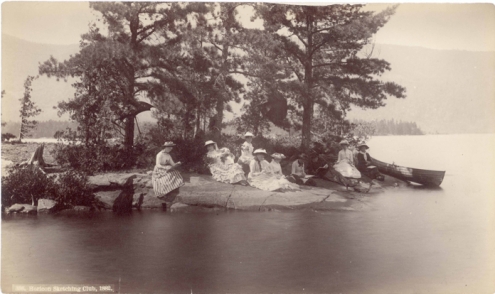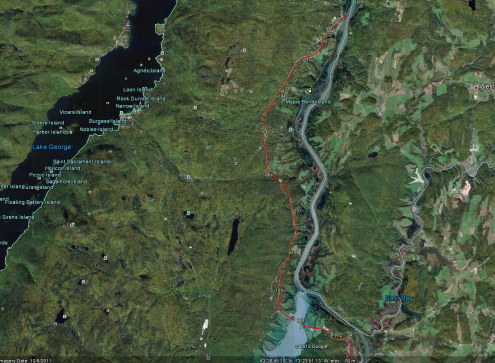
Recently, I had the chance to interview Megan Price. Megan is the author of the Vermont Wild series and has just released a new book in the collection. Many of her stories focus on western Rutland County which is just over the New York border.
Below is my interview with her.
Could you tell us a little bit about yourself and the series?
I was a reporter for many years at the Rutland Herald, Times Argus, Vermont Press Bureau and managed some weekly newspapers. I’ve always written. I love outdoor adventure and wildlife and humor. And that’s the winning combination in these books.
VERMONT WILD is a collection of true, wacky adventures of retired fish and game wardens, all of whom worked in Vermont. Their encounters with lovesick moose, baby raccoons, wily poachers, hard-headed dogs and much more are in these stories. Anything that could go wrong, usually does. Readers laugh along with the men as they struggle to right a situation. The wardens are real as are their stories and the locations.
Each book has 12 to 15 stories, and each tale is told as if a warden is speaking to you around a campfire. Ages 9 to 99 read and love the stories, women as well as men. Pictures of the men are in the book and each is given credit for his story. They lived the stories. I write them.
The books are a huge hit here in Vermont and have been best sellers at many Vermont bookstores three years in a row. Guys take them to hunting camp, teachers use the books to get youngsters to read and older people read the stories and recall and share their own adventures with their families.
Do the books have to be read in order or are they “stand alone?”
Each story stands alone. You can pick up any one of the three books, launch into any story in any book and laugh. Each story is illustrated by a retired game warden, Bob Lutz, who also happens to be a talented caricaturist, and grew up in northern New York. Bob knows all these guys personally and professionally and is able to capture the moments brilliantly in his own quirky way.
Huletts Landing is very close to western Rutland county. You write about some interesting historical figures from Rutland county. Could you tell us about some of these people here?
Tom Stearns was a warden in western Rutland County for many years. He shares a funny snowmobiling story in Volume 3. Farther north, warden Richard Hislop worked Lake Champlain along with Howard Brown and both have great stories in Volume 2. Down in Bennington County, a story from Wayne Rowell about removing beavers from the last water-powered sawmill at the top of Route 9 in Woodford is a great historical piece, I believe. That’s another Volume 3 tale. Volume 1 has great stories from Vermont’s Northeast Kingdom that have become instant classics here in Vermont.
Vermont Wild, Volume 1 contains only the stories of retired warden, Eric Nuse. Eric was the impetus for getting me to write these stories. I met Eric through a national program called, “Becoming an Outdoors Woman,” worth checking out for any woman wanting to gain outdoors skills. It is offered in many states, including New York and all women, all ages and abilities are welcomed! I urge readers to check New York’s BOW offerings out. (http://www.dec.ny.gov/education/68.html) Eric has great stories. His story of a dead moose and dynamite – which I called “Moose Vesuvius” in the book – is outrageously funny. It will bring tears to your eyes!
The combination of outdoor adventure, danger, real people, real locations and wildlife combining stories from real people with events in our history and certainly, all these stories of hard-working men resonate with a lot of people.
Can the books be purchased online or locally?
Books can be purchased at the Slate Museum in Granville, NY – Call first for availability. Also, Hermit Hill Books on Main Street in Poultney, VT, or Northshire Books in Manchester, Vermont Book Shop in Middlebury or through any bookstore. Lastly, they can be ordered online at www.VermontWild.com and we can mail them directly to people.
Anything else I’m missing?
I’d love to do a collection of true funny retired warden from men and women who worked in the Adirondacks. They can email me.

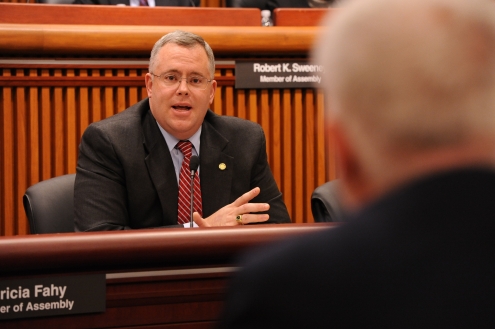
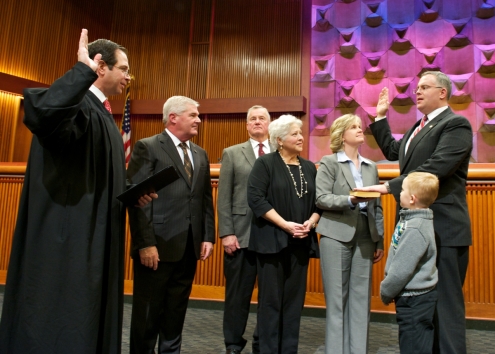



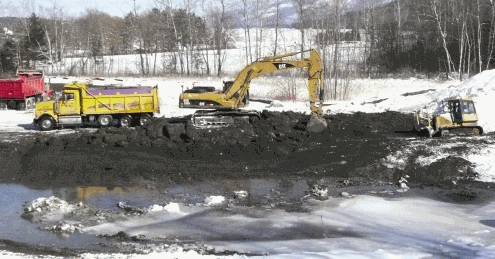 Construction work being performed in 2011 on the south parcel of the West Brook Conservation Initiative project in Lake George. The new stormwater treatment complex and environmental park will treat millions of gallons of stormwater and add a new outdoor venue at the southern end of the Lake.
Construction work being performed in 2011 on the south parcel of the West Brook Conservation Initiative project in Lake George. The new stormwater treatment complex and environmental park will treat millions of gallons of stormwater and add a new outdoor venue at the southern end of the Lake.
